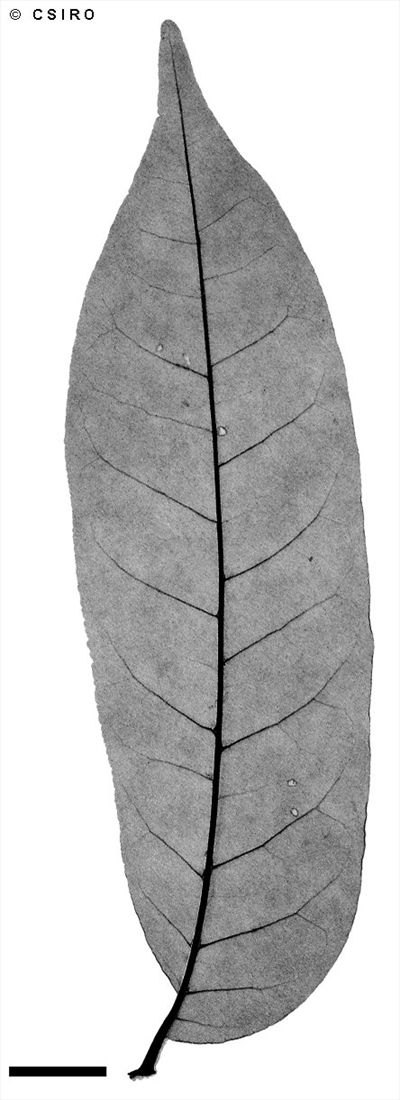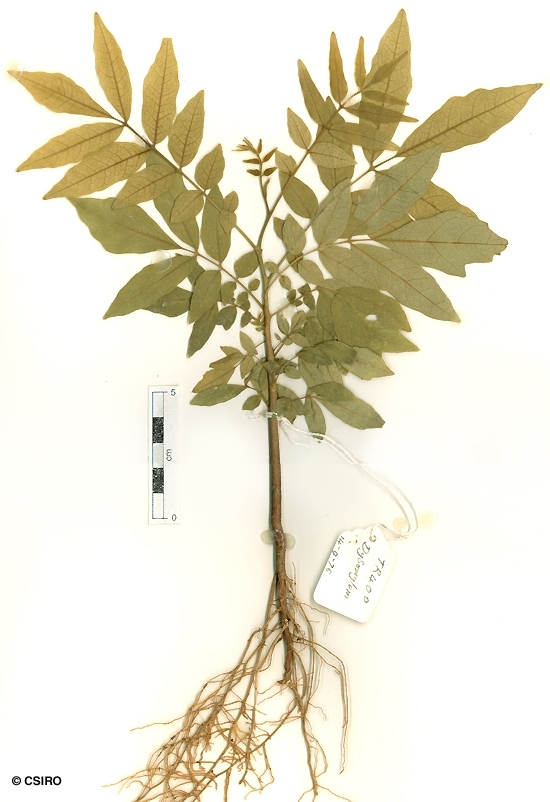Australian Tropical Rainforest Plants - Online edition
Dysoxylum mollissimum subsp. molle (Miq.) Mabb.







Mabberley, D.J. (1994) Blumea 38: 309.
Miva Mahogany; Red Bean; Pencil Cedar; Miva; Turnipwood; Mahogany, Miva; Cedar, Pencil; Bean, Red; Onionwood
Blaze odour resembles that of Red Cedar (Toona ciliata), onions, shallots or turnips. Yellowish brittle stripes often visible in the inner blaze.
Leaflet blades about 6.5-16 x 3.5-5 cm, conspicuously unequal-sided at the base with leaflet blade development on one side of the midrib but not on the other. Freshly broken twigs emit an odour of onion (Allium cepa), shallot (Allium ascalonicum) or turnip (Brassica rapa). Domatia are foveoles with tufts of hairs at the orifice.
Fruits globular, about 20-30 mm long, outer surface scurfy brown. Sarcotesta orange-red or red covering the seed except for the hilum. Cotyledons green.
First leaves hairy, the terminal leaflet toothed or lobed. On later leaves the terminal leaflet also often toothed or lobed. At the tenth leaf stage: upper surface of leaflet blades, leaflet stalks and axis of compound leaf hairy; margin of the leaflet blade often somewhat sinuate; terminal leaflet sometimes obscurely toothed or lobed; oil dots small, visible only with a lens. Seed germination time 20 to 45 days.
The sawdust from this species is reported to cause allergic reactions in mill workers. The leaves of this species are thought to have caused the death of a cow and has caused problems with goats on the Atherton Tableland. Everist (1974).
This species may have insect growth regulating substances in the seeds. (http://hpt-ipb.dhs.org/publication/bulletin/insec ticidal3.htm)
This species produces a useful timber which is well suited to be used in polished floors and boat decking. Swain (1928).
Wood specific gravity 0.64. Cause et al. (1989).





